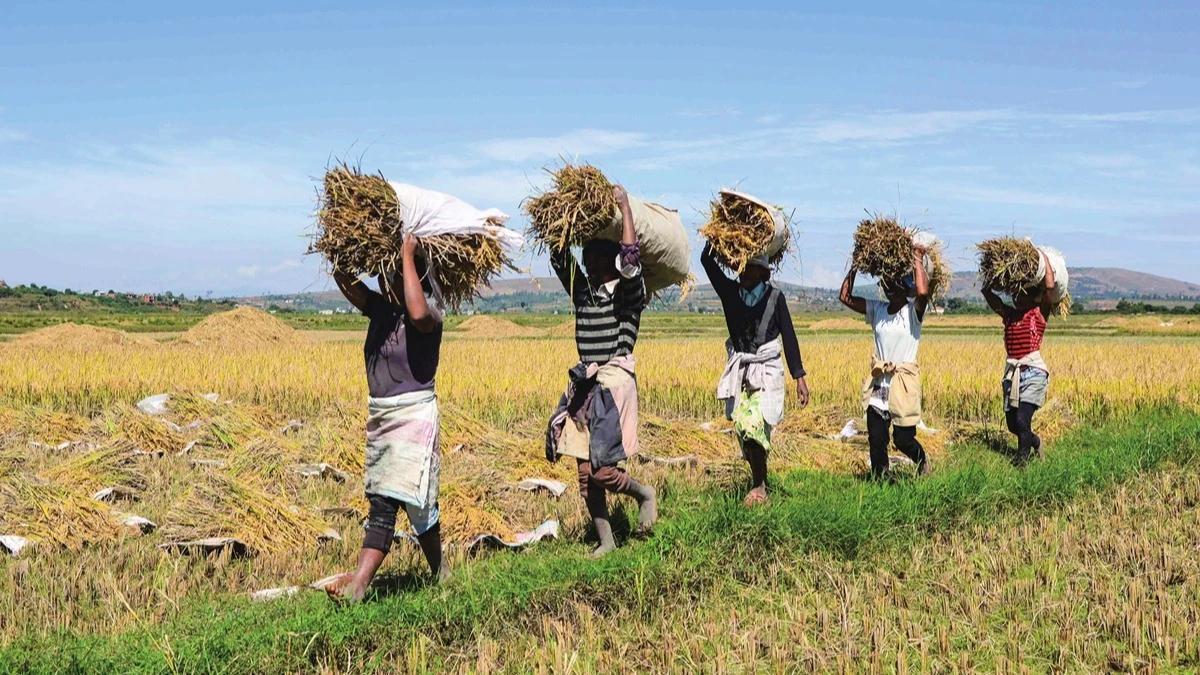Africa-Press – Gambia. Isatou F Camara is the director of climate finance at The Gambia’s Ministry of Finance and Economic Affairs. Here, she sets out her thoughts on the conversations at the recent World Bank and IMF Spring Meetings and reiterates the urgent need to transform international funding mechanisms.
Imagine trying to build a seawall with a leaky bucket while a storm rages overhead.
That’s the daily struggle for least developed countries (LDCs) like mine, The Gambia, as we confront the intensifying impacts of climate change.
The metaphor is painfully apt – our resources are scarce, the systems that should support us are slow and complex, and yet we are expected to withstand and adapt to one of the greatest challenges of our time. Meanwhile, the storm – quite literally – gets worse.
I’ve just returned from the Spring Meetings of the World Bank and International Monetary Fund (IMF) (it’s a long journey from Washington to Banjul!), where these realities were again front and centre.
While these meetings are often viewed as technical and policy-heavy, for me, they are personal. They are a reminder of what’s at stake and how urgently we need to reform the way global finance works – especially for those on the frontlines of the climate crisis.
The challenge for LDCs
We entered the meetings carrying the burden of a triple crisis – climate, nature and debt. These crises are not isolated; they’re intertwined and compounding. Climate shocks reduce government revenue and increase costs. Debt servicing becomes harder. And investments in nature and resilience are deprioritised, even though they are exactly what we need to protect lives and livelihoods.
Despite years of global commitments, climate finance is still not reaching those who need it the most. The current finance architecture – designed long before the climate emergency became what it is today – remains fragmented, bureaucratic and inaccessible. For countries like The Gambia, accessing funds feels like navigating a maze blindfolded. Time is wasted. Opportunities are lost. And people suffer.
At the same time, global dynamics are shifting. Development budgets are tightening, and political support for climate action is, in some places, being eroded. For LDCs, this uncertainty only reinforces the need for finance that is predictable, grant-based and not tied to political or geopolitical bargaining. We cannot build long-term strategies on short-term whims.
What I heard at the spring meetings
Throughout the week, I participated in several important conversations. At an IIED and ODI Global event, we explored how to secure stronger, more effective support for economies on the frontlines of climate change.
At a Centre for Disaster Protection event, we looked at how pre-arranged disaster risk finance with an associated implementation plan is key to acting quickly to reduce loss and damage – while highlighting that minimising risk in the first place is vital.
And at the V20 group of climate-vulnerable countries session, we continued the discussion of country platforms – a promising concept with the potential to centre the voices and leadership of the most affected countries in the discussion about solutions.
One encouraging shift was in the narrative itself. There is growing recognition that adaptation – not just mitigation – needs urgent attention and funding. People are talking more about resilience, about locally-led solutions, and about the need to overhaul the international financial architecture to better serve vulnerable nations.
But talk alone is not enough. Delivery mechanisms still don’t align with LDC needs. Promises are made, but they are often not followed through. Even the idea of ‘country platforms’, which could help align public and private finance, must be carefully managed. These platforms must be country-led, context-specific, and built on real national capacity – and not be imposed from the outside.
The Gambia’s way forward
Back home, we are not waiting. The Gambia is developing a comprehensive climate finance strategy. We are embedding climate into our national planning and budgeting systems, but we know that without access to affordable finance, our ambitions will remain just that.
That’s why concessional finance – particularly grants – remains so critical. It allows us to take action without exacerbating our debt burdens. We are also working to mobilise domestic resources and create a climate that attracts private sector investment, but we are also realistic: adaptation projects are still considered high risk, with limited bankable models. This will take time.
De-risking mechanisms, patient capital and targeted incentives will be key. In the long run, domestic private finance will have a role to play. But for now, public and concessional finance must do the heavy lifting.
Keeping up the momentum
The Spring Meetings are just one stop on the reform journey. If we want to turn conversations into action, we must stay engaged and keep the pressure on. There are key moments ahead: A final thought.
As negotiators, we often deal in numbers, mechanisms and frameworks. But behind all of it are people and communities. In The Gambia, every delay in climate finance means another family at risk from flooding. Every inaccessible funding mechanism is another barrier to building the future we need.
So yes, we are still trying to build that seawall with a leaky bucket – but we are not giving up. We are innovating and pushing for a financial system that finally delivers for us.
Isatou F Camara is the climate finance negotiator for The Gambia Ministry of Finance and Economic Affairs. She is also the Least Developed Countries Group climate finance coordinator, and the group’s alt666666ernate board member for the Green Climate Fund.
For More News And Analysis About Gambia Follow Africa-Press






